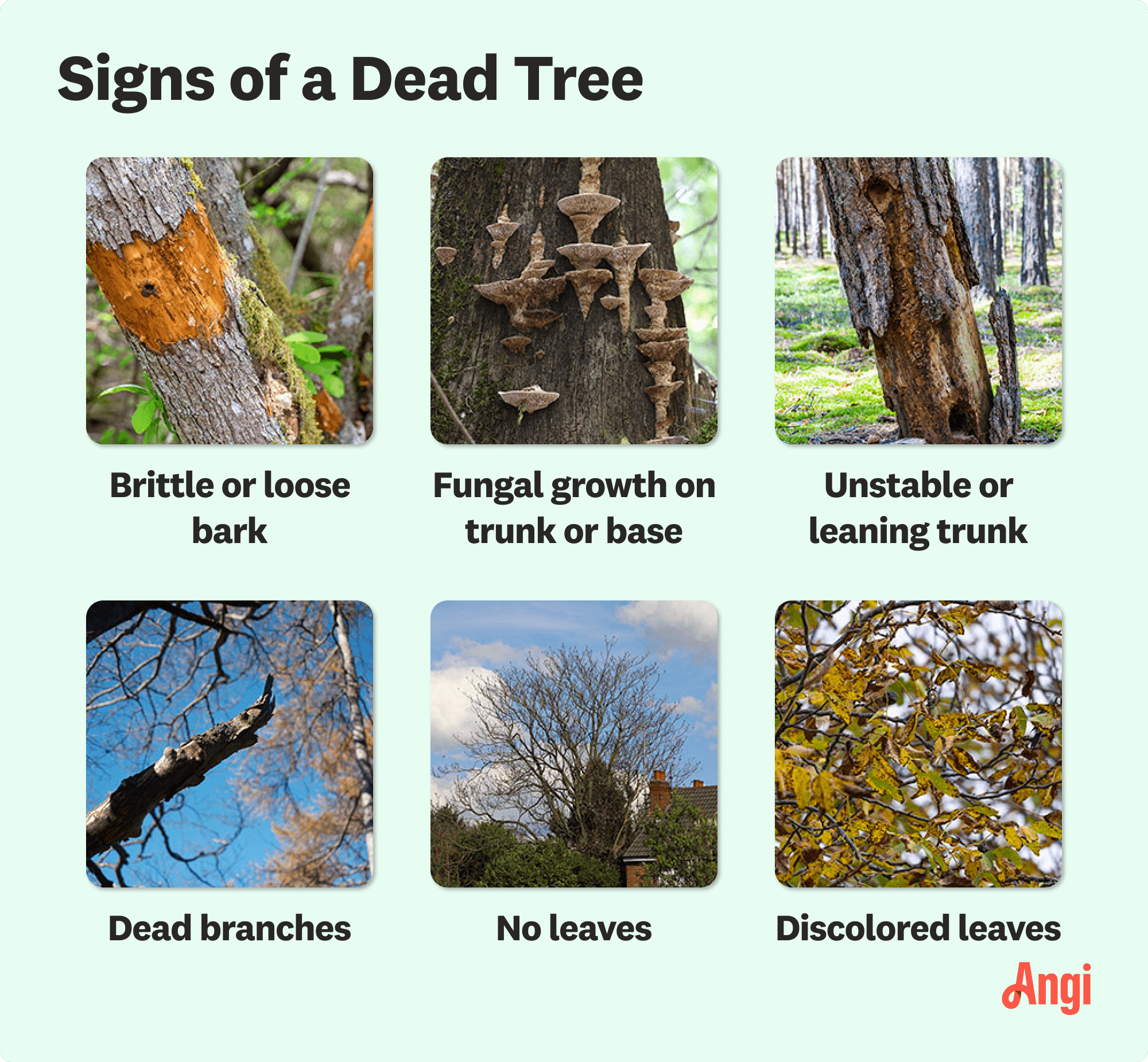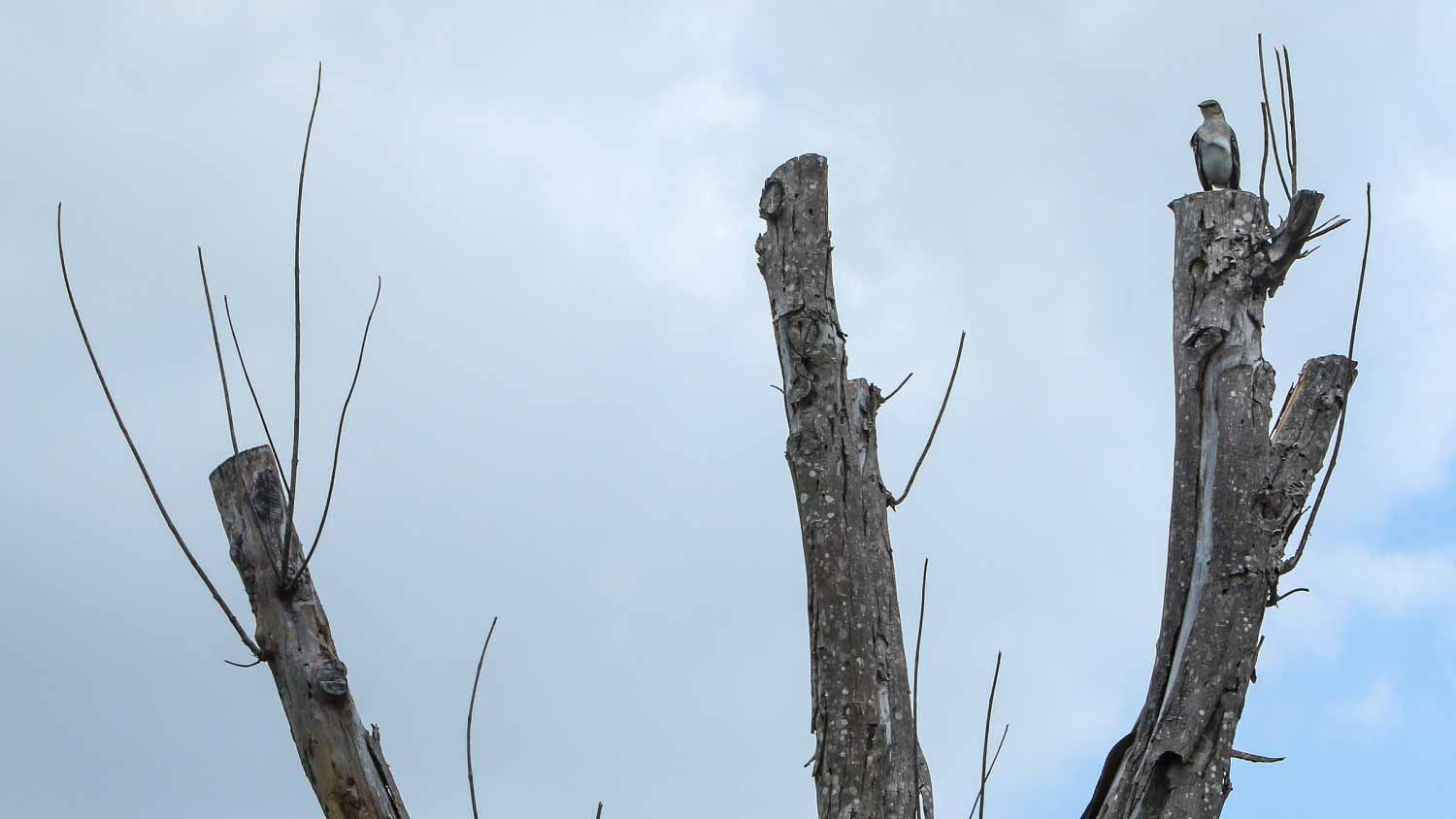
Trimming your bushes is one of the less costly aspects of landscaping, and it’s helpful to bundle many trimming services together to save money.
It can stay upright for a surprisingly long time


Dead trees can remain standing for a few weeks to several years, usually between two to five years.
Some types of less-hardy trees, like ponderosa pines, tend to fall faster.
A dead tree that’s still standing can be a safety hazard, which is why you should hire a tree removal professional as quickly as possible.
Trees often die slowly, but they eventually reach the point where gravity takes over. But how long can a dead tree remain standing? Dead trees stand for anywhere between a few weeks to several years, depending on tree size, species, and previous health condition. A dead tree often stands for another two to five years. Here’s a closer look at what can cause a decaying tree to fall, plus when you should consider removing a tree.

In natural forests, a dead tree that stays standing is called a “snag” and is considered important for environmental health. But in your yard, a standing dead tree is a whole different matter—one that carries significant risks if it falls.
In a forest, mature trees that die often stay standing for between 2 and 5 years before they fall. But dead trees are unpredictable, and it’s difficult to pinpoint exactly when one will fall. Decay progresses at different rates for different trees. It could be a matter of days or weeks, or many years before a tree falls. But in nearly every case, trees finally fall because their anchoring root system and heartwood can no longer support them.
Those massive roots do more than just bring in nutrients through the soil: They also help keep the tree, which can weigh up to 500 pounds or more, supported and steady. Once the roots die off and the heartwood starts decaying, it’s only a matter of time before the tree falls.
The diameter of the tree will also dictate when it will fall. Trunks larger than 16 inches at about shoulder height have considerably more heartwood and larger roots which need to decay before the tree will fall.
The other primary factor that affects how long a dead tree remains standing is the wind. Many dead trees fall during seasonal storms, and the added weight from rain or snow only hastens the process. Trees growing in a thick forest tend to have more protection against the elements than isolated trees in your backyard, which is why they often take longer to fall.
The species of the tree affects how quickly it will fall. For example, the tough yellow cedars of Alaska can stay standing for decades after they’ve died. Hardwood species often remain standing longer because they resist decay. Species like cedars have antimicrobial properties, too.
The species also affects the shape of the tree, how it distributes weight, and what climate (bad weather included) it prefers to grow in, which could be why research has found that ponderosa pines fall faster than species like Douglas fir or lodgepole pine.
As we mentioned earlier, trees in your yard generally have less protection and tend to fall sooner.
If a tree dies because its roots were crushed or attacked by disease, it’s more likely that the tree will fall quickly. Trees that are overtaken by root fungus, for example, can die and fall in a matter of months.
On the other hand, if a tree dies with its roots intact and well-preserved, it’s much more likely to stay standing longer. Trees that died from drought, for example, tend to stay upright until decay has time to slowly set in.

Unlike forest snags, a dead tree on your property is far from harmless. Once trees reach above 20 feet, they are heavy and tall enough to cause lots of damage when they fall. Your fence, roof, exterior walls, and carefully crafted landscape could all be at risk from a falling tree. Plus, you never know when heavy branches might fall.
If the tree died from disease, it’s possible the disease will spread to healthy trees. The decaying wood also attracts termites and other pests you don’t want near your home. And as the wood dries out, it can catch fire more easily.
Not sure about the status of your tree? It can be difficult to tell when a tree is dying. When in doubt, contact an arborist or similar tree maintenance professional near you for a consultation. They’ll be able to assess the health of your tree, suggest a course of action if the tree can be saved, or let you know it’s time to remove the tree before it falls.
If you have experience using a properly-sized chainsaw, cutting down a small tree can be a DIY job. But it’s not safe for homeowners to remove large trees on their own; in those cases, you should contact a professional tree removal service near you to do the job. Tree removal costs range from $200 to $2,000 depending on the number of trees and their size.
From average costs to expert advice, get all the answers you need to get your job done.

Trimming your bushes is one of the less costly aspects of landscaping, and it’s helpful to bundle many trimming services together to save money.

Discover the average tree maintenance cost, key price factors, and tips to save. Get expert insights to plan your tree care budget with confidence.

Get a clear estimate of palm tree maintenance cost, including trimming, fertilization, and pest control, so you can keep your palms healthy and your budget on track.

Ready to learn how to cut down a tree in your yard? Follow this DIY guide to find out how to safely fell a tree with a chainsaw.

When trees suffer a lightning strike, what happens to it? Here’s what happens, the factors at play, and what you can do about lightning strikes.

While palm trees don’t need much maintenance, they occasionally require trimming to keep them healthy. Learn how to trim a palm tree.